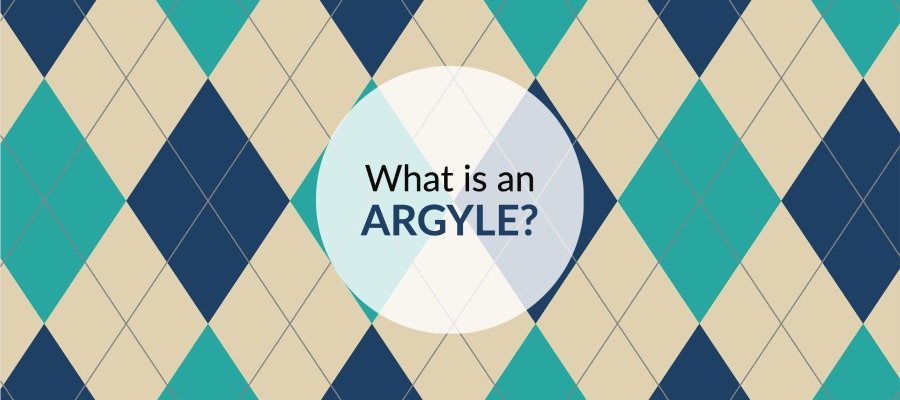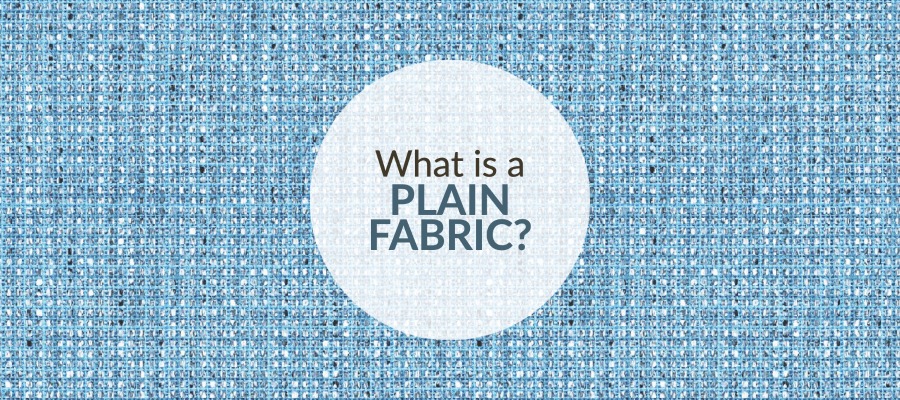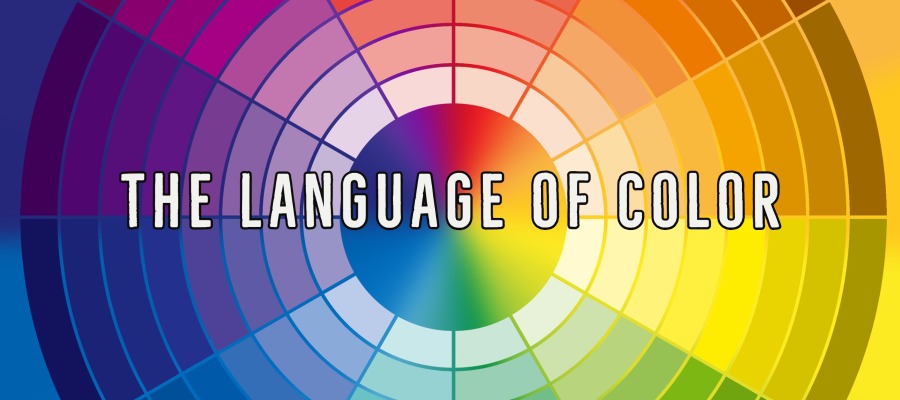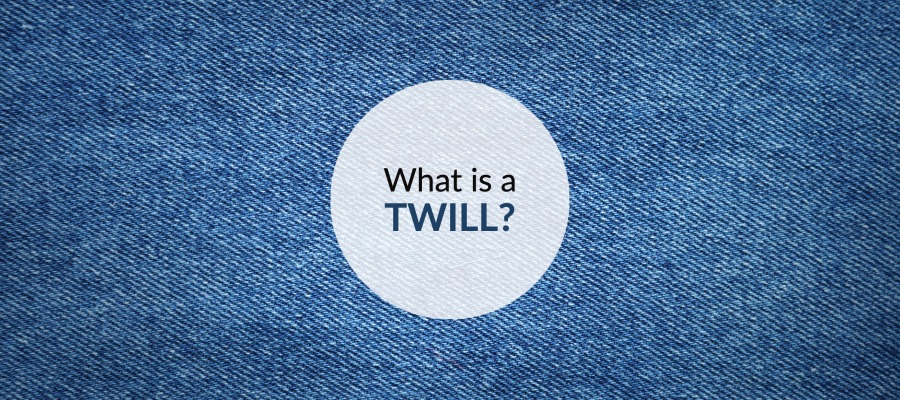
What is a Twill?
After plain weave, the twill is the next most common weave structure. You will recognize it by the distinct diagonal line visible on the face of the fabric. Unlike in plain weave, where the weft yarn goes over one warp thread and under the next, the binding points in a twill happen in a diagonal progression across the warp, moving steadily to either the left or right. The yarn also usually travels over groups of threads. For example, a very basic twill has a weft thread that travels over two warp threads, then under two warp threads. The next weft thread inserted will also travel over two, then under two, but it will start one thread over, creating the diagonal. This example is known as a 2/2 twill.
While this structure may be simple, the variations in this construction are seemingly endless. First, there are many combinations of how many threads to go over and then under. There are 1/3 twills and 3/1 twills. Looms with more harnesses (or shafts) can do even bigger ones, such as 4/4 twills and 3/5 twills.
It’s easy to see the design opportunities in this structure.
Textile designers and weavers sometimes use the phrase balanced twill to refer to a twill in which the same number of warp yarns intersect with the same number of weft yarns, like our 2/2 twill example.
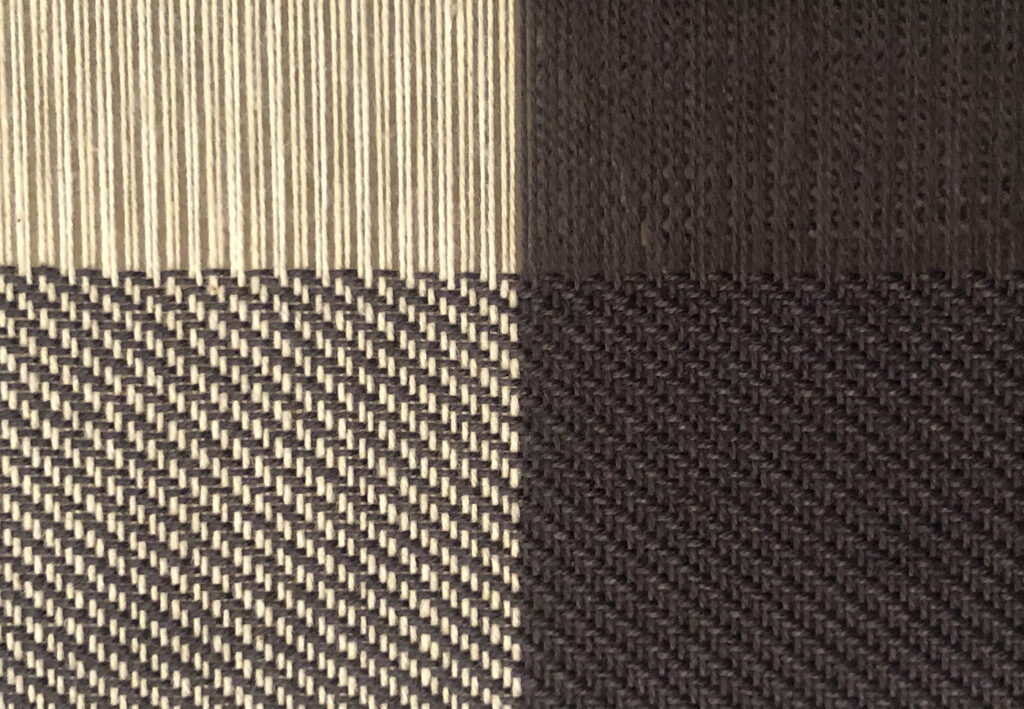
On the flip side, an unbalanced twill is a construction that will be more warp or weft dominant. For example, a fabric made by a weft traveling under one warp thread and then over three warp threads (a 1/3 twill) will show more of the weft and be weft-dominant (or weft-faced). Likewise, the 3/1 twill will go under three warp threads and then over one thread, creating a warp-dominant (or warp-faced) cloth.
The look of a twill extends beyond construction.
Different factors can also change the look of a twill and the angle of its diagonal line. For example, you can achieve a steeper diagonal by using a finer yarn and dense sett (yarns per inch in the warp). A lower density in the sett will produce a flatter diagonal.
The simple twill is the building block for many other structures and effects.
A straight twill refers to a cloth where the diagonal line is unbroken across the fabric. Look down at your jeans. Denim is one of the most recognizable straight twills out there. Yet designers can decide to reverse the twill direction while inserting the weft, and the fabric will have a zig zag, similar to a chevron. In addition, they can thread their loom in a point and for a zig zag in the warp direction. This would create a recognizable herringbone.
Who first designed the twill?
Likely many weavers all around the world. Many textile historians speculate the twill was the next structure to evolve after plain weave. This structure allows weavers to put more threads into a cloth because the yarns make fewer interlacings, which take up space. As a result, fabrics woven in a twill can be thicker or heavier than the same yarns woven in a plain weave. Twills also tend to have more drape and even a slight stretch.
In the classic book on weave structures, A Handweaver’s Pattern Book by Marguerite Porter Davidson, she notices older weavers using the word Tweel, deriving from the French word “touaille,” which refers to a towel. She goes on to quote weaver John Murphy writing in 1827, “Next to the plain texture, tweeling is the most extensive in its application to every branch of cloth manufacture; it not only serves as a ground on which other decorations are woven, but it forms, purely on its own principles, some of the most beautiful patterns which can be produced in the art of weaving.”
Most handweavers would agree the twill is incredibly versatile. As in any woven cloth, the yarns chosen by the designer for a particular fabric play an integral role in how the structure looks and performs. Woven with fine wool, you have a sophisticated menswear fabric. With silk, something elegant and lustrous. With cotton, your favorite pair of jeans.
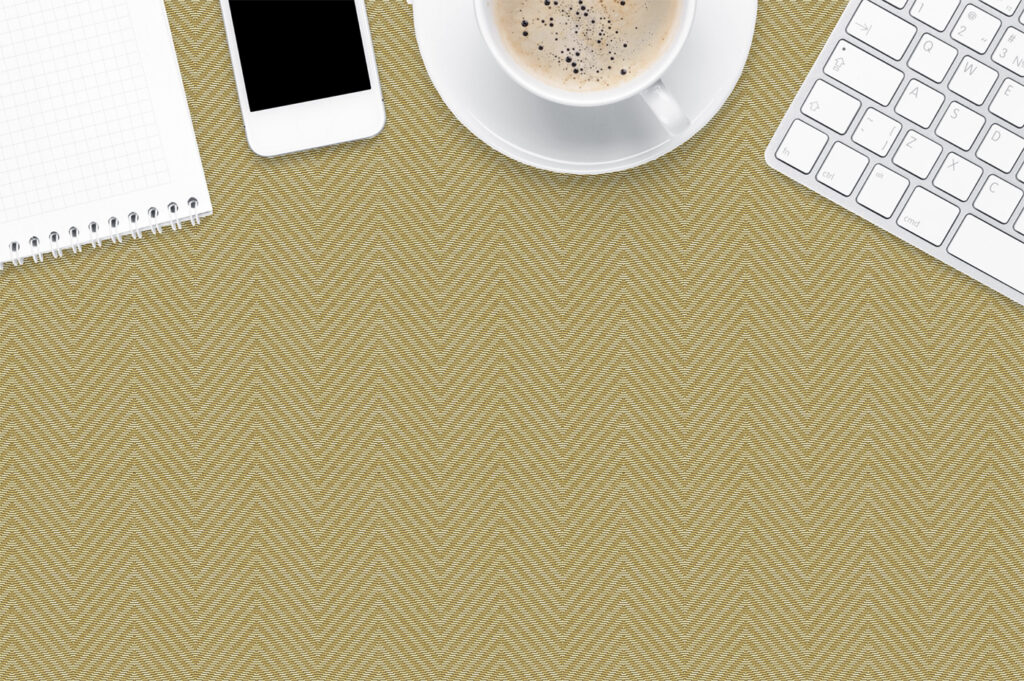
Even print designers can’t resist using a twill.
A twill image used for texture in a shape or the ground can create dimension and give the illusion of woven cloth. It also has such a recognizable look that it can instantly take a print design to a more familiar place.
Look around at what you’re wearing or what you’re sitting on. You’re sure to notice a twill.
Sources:
A Handweaver’s Pattern Book, Marguerite Porter Davidson
A Handbook of Weaves, G.H. Oelsner
Weaving: A Handbook of the Fiber Arts, Shirley E. Held
Share this post
Author
DESIGN/COLOR TRENDS AND AWESOME INFORMATION IN YOUR INBOX
Sign up for our monthly trend letter





